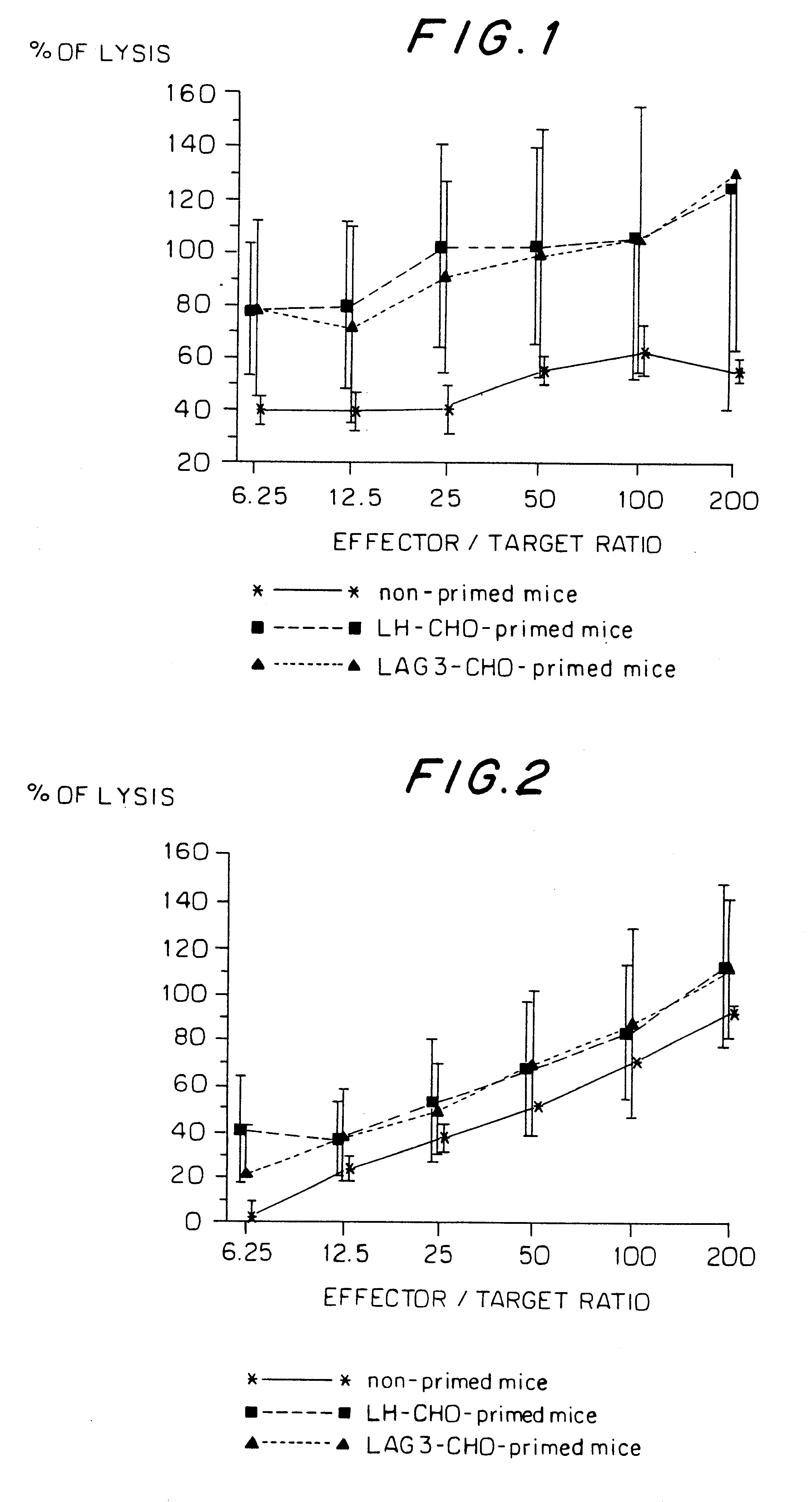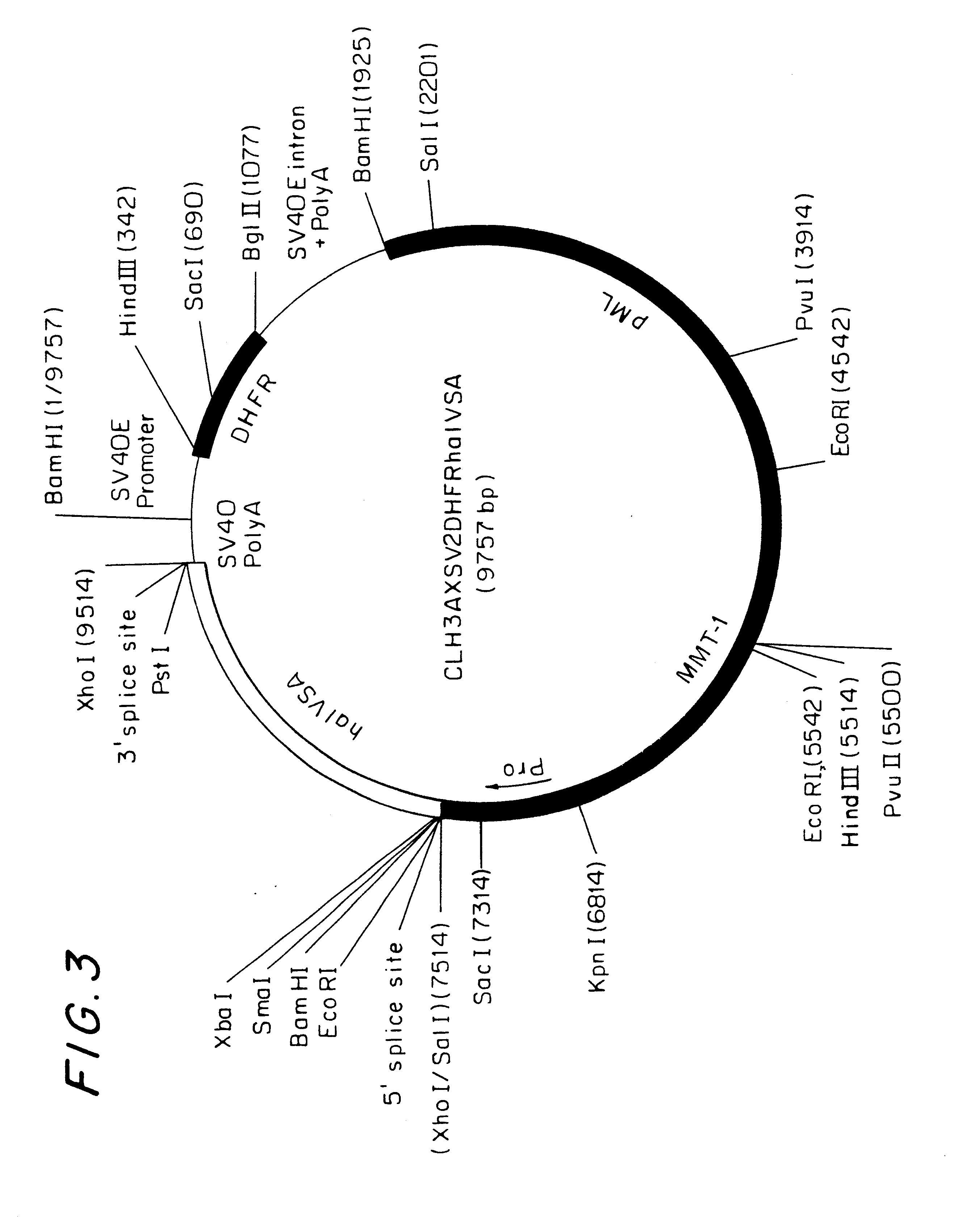Methods for preventing graft rejection in transplantation and for producing a universal gene therapy host cell using lymphocyte activation (LAG-3)
a technology of lymphocyte activation and host cell, which is applied in the direction of fused cells, immunodeficiency disorder, drug composition, etc., can solve the problems of increased susceptibility to opportunistic infection and tumor formation, difficult allogeneic bone marrow transplants, and higher graft failure ra
- Summary
- Abstract
- Description
- Claims
- Application Information
AI Technical Summary
Benefits of technology
Problems solved by technology
Method used
Image
Examples
Embodiment Construction
Methods
Generation of CHO Cells Expressing Transmembrane LAG-3
LAG-3 cDNA was excised as a 1620 bp Xho fragment from pCDM8 plasmid (Invitrogen San Diego Calif.) and purified by agarose gel electrophoresis.
The fragment was subcloned into the pCLH3AXSV2DHFRh.alpha.IVSA (D.alpha.) mammalian expression vector (FIG. 3) digested with Xho. CHO-DUKX (DHFR.sup.-) cells were transfected with the D.alpha.LAG-3 construct by CaPO.sub.4 precipitation method. Transfected cells were grown in selection medium (MEM medium without deoxy- and ribonucleotides +10% dialyzed fetal bovine serum +1% L-glutamine +0.02 .mu.M metothrexate). The expression of LAG-3 was checked by western blotting on lysed cell membrane preparations and periodically by flow cytometric analysis using anti-LAG-3 monoclonal antibody 17B4.
Transplantation of CHO Cells into Mice
Chinese hamster ovary (CHO) cells, either untransfected (wild type) or transfected with full length human LAG-3 or human LH cDNA, were detached from plastic flas...
PUM
| Property | Measurement | Unit |
|---|---|---|
| length | aaaaa | aaaaa |
| soluble fractions | aaaaa | aaaaa |
| soluble | aaaaa | aaaaa |
Abstract
Description
Claims
Application Information
 Login to View More
Login to View More - R&D
- Intellectual Property
- Life Sciences
- Materials
- Tech Scout
- Unparalleled Data Quality
- Higher Quality Content
- 60% Fewer Hallucinations
Browse by: Latest US Patents, China's latest patents, Technical Efficacy Thesaurus, Application Domain, Technology Topic, Popular Technical Reports.
© 2025 PatSnap. All rights reserved.Legal|Privacy policy|Modern Slavery Act Transparency Statement|Sitemap|About US| Contact US: help@patsnap.com



